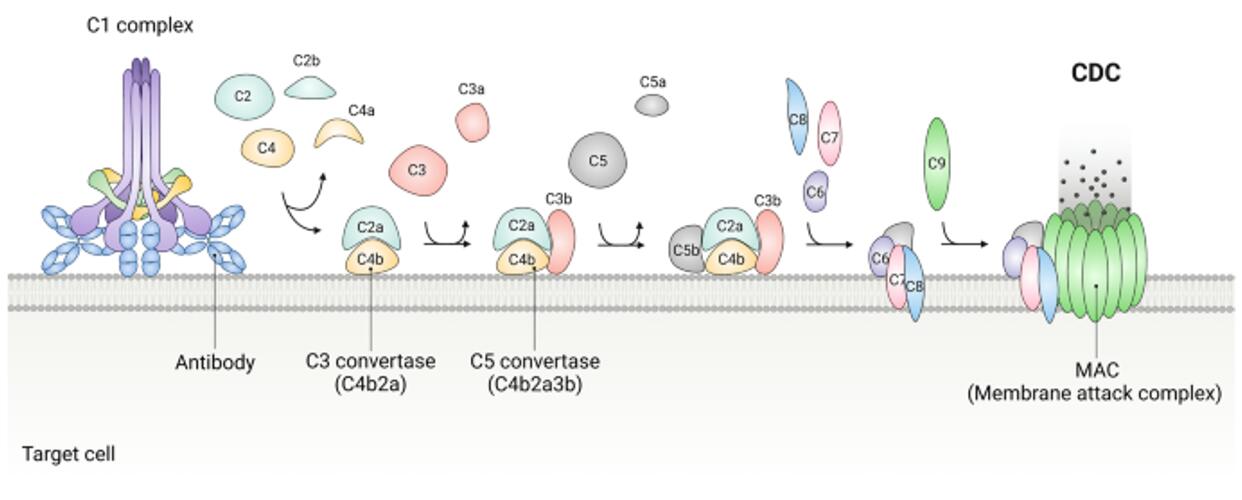Complement-Dependent Cytotoxicity (CDC) is another mechanism of the immune system used to eliminate target cells, particularly those marked by antibodies. Similar to Antibody-Dependent Cell-Mediated Cytotoxicity (ADCC), CDC involves the activation of the immune system by antibodies. However, in CDC, the complement system is primarily responsible for cell destruction.
 Figure 1. Complement-Dependent Cytotoxicity (CDC) [1]
Figure 1. Complement-Dependent Cytotoxicity (CDC) [1]
Here's an overview of the key steps involved in Complement-Dependent Cytotoxicity:
The CDC assay provided by Creative Bioarray follows a well-established protocol, ensuring consistent and reproducible results. The process involves incubating target cells with the test antibodies or therapeutic agents, followed by the addition of complement serum. The complement system is then activated, leading to the formation of the membrane attack complex (MAC) and subsequent target cell lysis. The extent of lysis is measured by various methods, such as flow cytometry or cell viability assays.
Reference:
1. Lee W, Lee SM, Jung ST. Unlocking the Power of Complement-Dependent Cytotoxicity: Engineering Strategies for the Development of Potent Therapeutic Antibodies for Cancer Treatments. BioDrugs. 2023;37(5):637-648. doi:10.1007/s40259-023-00618-1
Online Inquiry